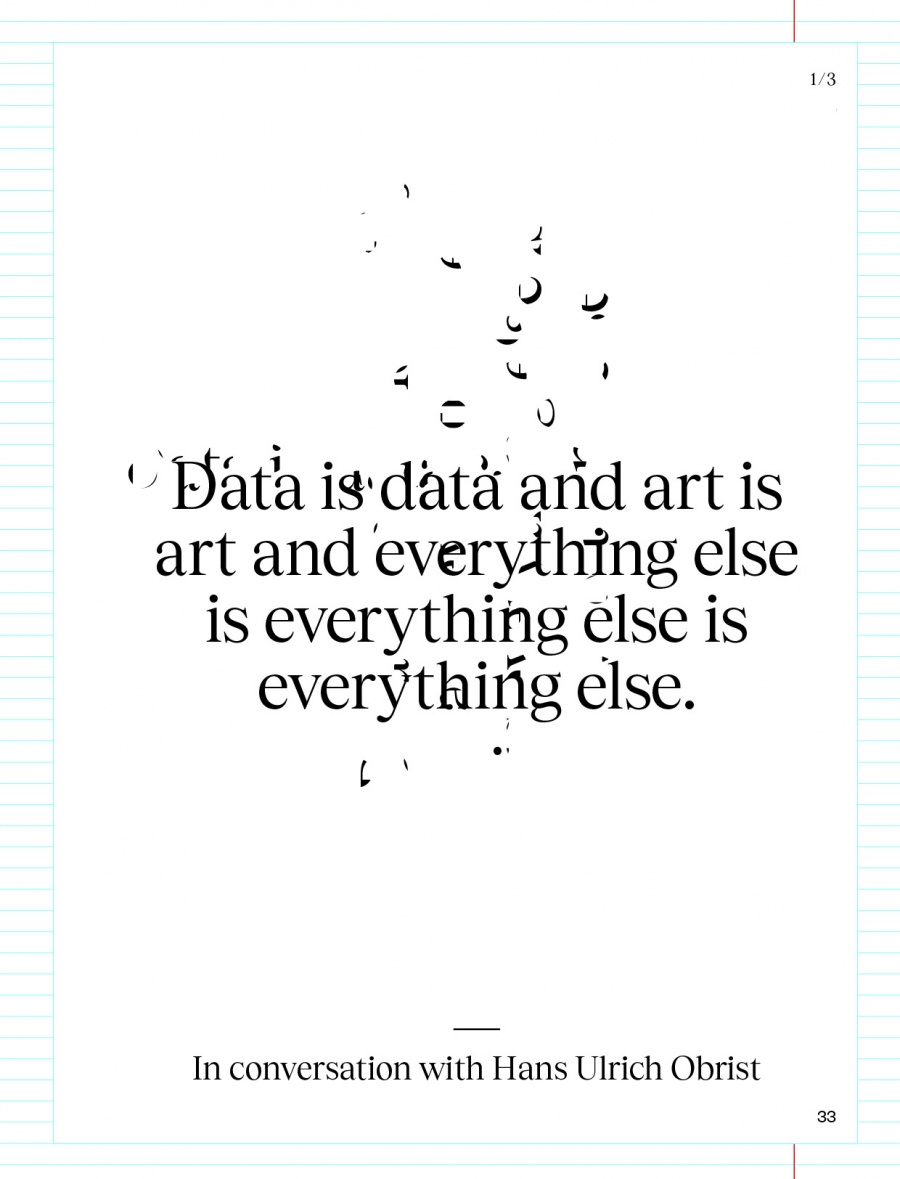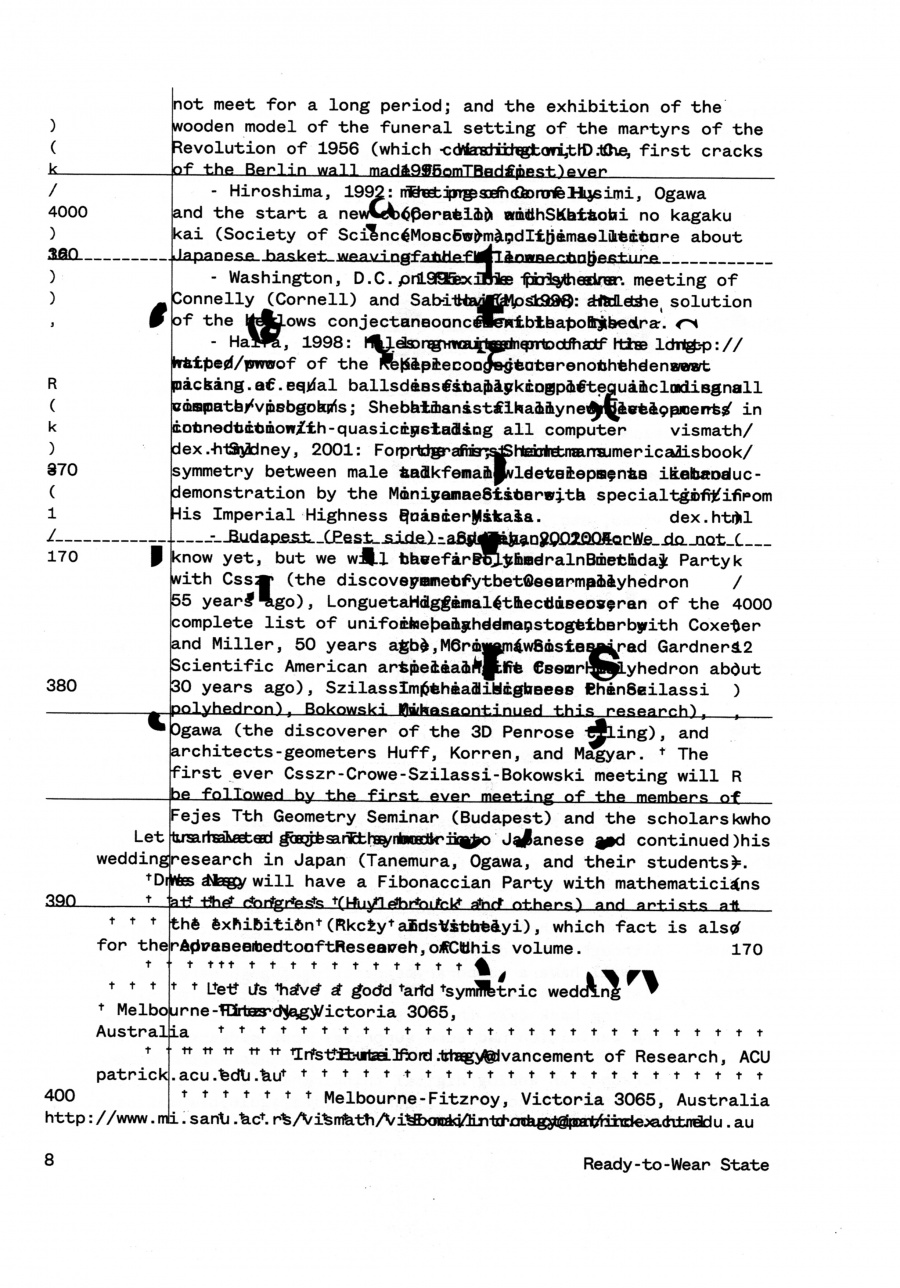A Conversation with Andrea Zittel
1.06.19 | Article by Brienne Walsh | Art, interview, Magazine | MM9 Click to buy
A Conversation With the Greatest Female Artist West of the Rocky Mountains.

A-Z Habitable Island for the Indianapolis Museum of Art: Customized by student-residents from the Herron School of Art and Design, 2009.
The first time I encountered Andrea Zittel’s work was at a press conference for Fluid Panel State, a 2012 solo exhibition of her work at Andrea Rosen. I had never heard of her before. I was immediately taken. First, because she was austere and serious — which read like the sort of sharp, imperious intelligence I don’t have, but admire, and want. And second, hearing about her work, which included a carpet made to fit the exact specifications of a cabin she hoped to buy near Joshua Tree, where she keeps her home, made me realize why I loved art so much in the first place. Because art tells the story of how we live as a civilization: what we value, what our rights are, who we worship, what stories we tell each other. A thousand years from now, another civilization may find Zittel’s collected output, and in studying it, learn the entire history of a woman. ∆ Andrea Zittel doesn’t merely make art. She lives art. Everything she eats, wears, and makes in A-Z West, the compound near Joshua Tree, California, where she lives and works, is her artwork. There is no separation. Projects include A-Z Uniform — in which, since 1994, she has created a uniform for herself that she wears every day to free herself from the anxiety of unlimited choice — and A-Z Wagon Stations, which are pods for living that contain everything a single person would need to comfortably live in the high desert, and for which she has recently begun to take open applications for visitors. ∆ I wanted to speak to Zittel because I am interested in the way that she is so fearless in using herself, and her compulsions, as a subject — her work is so good that the impulse to do so doesn’t need to be questioned as immature or invalid. First, we spoke over the phone — she, walking around A-Z West in the mid-afternoon heat, and me, in my apartment in Brooklyn. Because she hates doing phone interviews, we agreed to begin by setting up a topic to discuss, and then continuing our conversation over email.
BW:
I know you’ve been really busy this summer. You have a show open right now at the Middelheim Museum in Antwerp, Belgium. And you have been running the High Desert Test Sites all summer, in which you invite other artists to A-Z West and the surrounding area to stage projects.
AZ:
One of the problems that I have with the way the art world is structured is that there is this idea amongst artists that they have to wait for permission or validation. It makes no sense to me. It’s so interesting when you find artists who are making work, and who are putting it directly in the world. The original idea of High Desert Test Sites was to support work like that. Land is so cheap out here, and there’s an open and receptive art community. It’s a great place to do these experiments. It was intended to be this anti-institution venture — it turned into something that was viewed as an institution. I have one person, our managing director, who works 16 hours a week. But it’s not enough. It’s turned into a crazy period. I’m tired in between shows. But I’m trying to figure out how everything works together. A-Z west — I’ve been here for 15 years. When I originally moved here, I thought of this as a test. What I realized maybe five years ago was that it takes so much energy and so many resources to do this. This is going to be it. So now everything is very much focused in A-Z West. As a consequence — I’m trying to acquire as much energy as possible around me.
BW:
A-Z West is on 25 acres. The studio is 4,000-square-feet, you have guests in the A-Z Wagon Stations, you are running the High Desert Test Sites, and you’re also a mother. How do you structure your day so that you get everything done, and can still work on your own projects?

Single Strand Shapes: Forward Motion with Variable Rotations (Charcoal Grey with Black Edges), 2008.
AZ:
It’s super structured — I am a really organized person. The whole day, I have these patterns. I know my schedule for two or three years in advance. I always have these projects I want to do. When I wake up in the morning, I set out a task for the day to do. What I struggle with is really the day to day stuff.
BW:
I can’t even imagine being that busy. This whole summer, I’ve had literally almost nothing to do. It’s really hard not to have any structure. I feel like a failure. I’m actually pretty jealous of you.
AZ:
[Laughs] When you’re younger, you wake up in the morning and think, “What am I going to do today, maybe I’ll take care of x.” It’s definitely different. But now even just with my kid, I have certain things I have to do for him every day, and I need to prioritize what’s most important. It’s challenging in a good way. But it’s good to have space to think. It’s in the empty moments when you’re the most creative.
BW:
I obviously did a lot of research on you before this interview. I have a bunch of questions prepared. The first starts with a manifesto you wrote in 2005 in which you stated, “What makes us feel liberated is not total freedom, but rather living in a set of limitations that we have created and prescribed for ourselves.” It made me interested first in what these conditions are? And how hard it is to balance them? And if this sort of liberation is available for everyone, or only for those with a certain amount of monetary and/or philosophical freedom? I know you wanted to continue the interview over email, so I thought I’d begin with that, and maybe we can continue the conversation from there.
AZ: [Long Pause]
BW:
Is that boring? I can absolutely think of better questions.
AZ:
No, no, it’s actually interesting.
BW:
Ok, good! So I’ll send you an email after this, and we can get started.
[Over Email]
BW:
As I mentioned on the phone yesterday: you said, in your 2005 manifesto:
“What makes us feel liberated is not total freedom, but rather living in a set of limitations that we have created and prescribed for ourselves.”
What are the limitations you live within? These can be anything from practical limitations – wearing the same outfit, for example, or waking up at the same time every day – to philosophical or mental limitations. Not allowing yourself to stop working until you’ve exhausted yourself to x point, not adopting a problem unless you dream about it x times, not buying anything new to control your desire for more, etc.
AZ:
Since we spoke has been sort of nuts, we had a bunch of big storms that set us back a few days in the studio and then my son turned ten so we had to take him to Knott’s Berry Farm over the weekend. Anyway, hopefully there will be fewer distractions for the rest of the week. My limitations change all the time. There are some limitations that worked when I was younger (such as living in a tiny living unit, or not having a telephone, or using a single large sink for brushing teeth, doing dishes and taking baths) and other limitations that I have stuck to for close to thirty years (such as only using bowls for all eating and drinking functions, or the seasonal uniforms). And then there are other limitations sort of come and go more fluidly. For instance for a while I tried not having any internet at A–Z West — so I did all of my work off-line and then had to go into town to send and receive emails (this is virtually impossible now because people link to external sites and references so much) I also have an ever-evolving array of dietary restrictions and sometimes bedtime restrictions. I’m also really into quotas such as seven identical t shirts (that go under my uniforms) or seven pairs of underwear, or two comforter covers (that are interchanged with each other when the other gets washed), four bath towels… etc. Quotas are great because once you meet your quota you have to get out of that consumer mindset – and it also makes things a LOT easier to organize around the house. I also have things like a 100 pound quota for my dogs — I have three rescue dogs and each one weighed around 32 to 34 pounds when I got them (they were adults when I got them, so it seemed like I would be able to stick to this limitation)… however my blue healer just put on a lot of weight that year, so I think I may have overshot that quota unintentionally. But the one thing that your question brings up is the difference between a ‘dictate’ (or demand) and a limitation (or restriction). I actually see a dictates as being much more oppressive than limitations. Right now I’m in the process of trying to stop creating dictates for myself because no matter how useful they may seem — they always end up making me crazy and really stressed out. Last year I had a checklist of about 24 things that I tried to do each day to ‘improve my life’ — and by the time they were all ticked off I would be utterly exhausted. Now my only dictates include a long dog walk each morning, keeping the house reasonably picked up and taking my vitamins. But I’m still really into ‘limitations’ as I think that these work much better for me — and they create parameters that end up making me feel less stressed out. I’m thinking for instance about trying to limit the number of hours that I do email because doing this will allow room for so many other things that I never have time to do (read, listen to myself think, crocheting sweaters). I know that all hell will break loose in the studio if I do this because on some days I literally spend eight hours a day working on communications — but think about all of the other things that I will gain on a personally level if I just restrict that one simple task.
Read more on Modern Matter, Issue 9 – Everything Has Beauty



